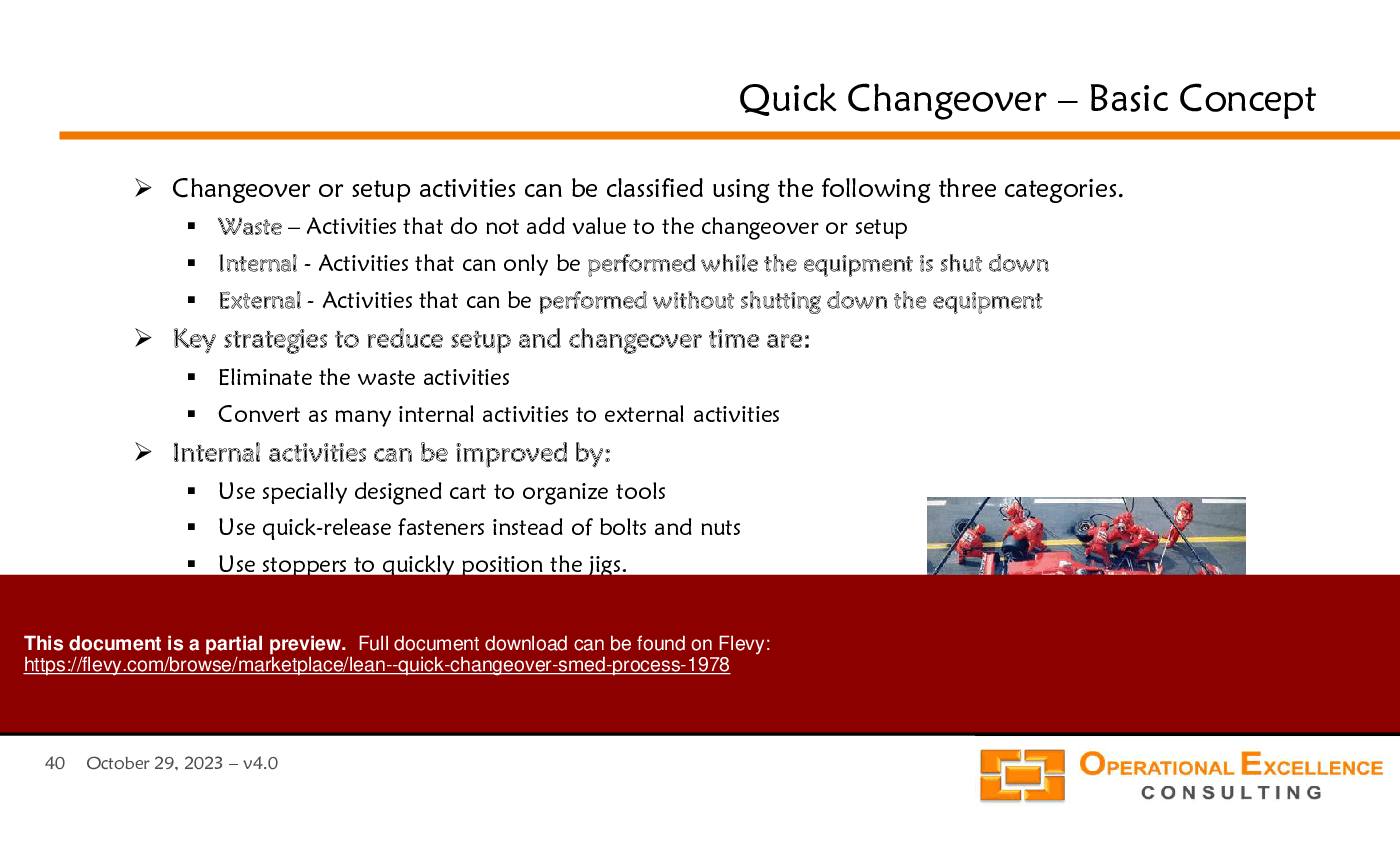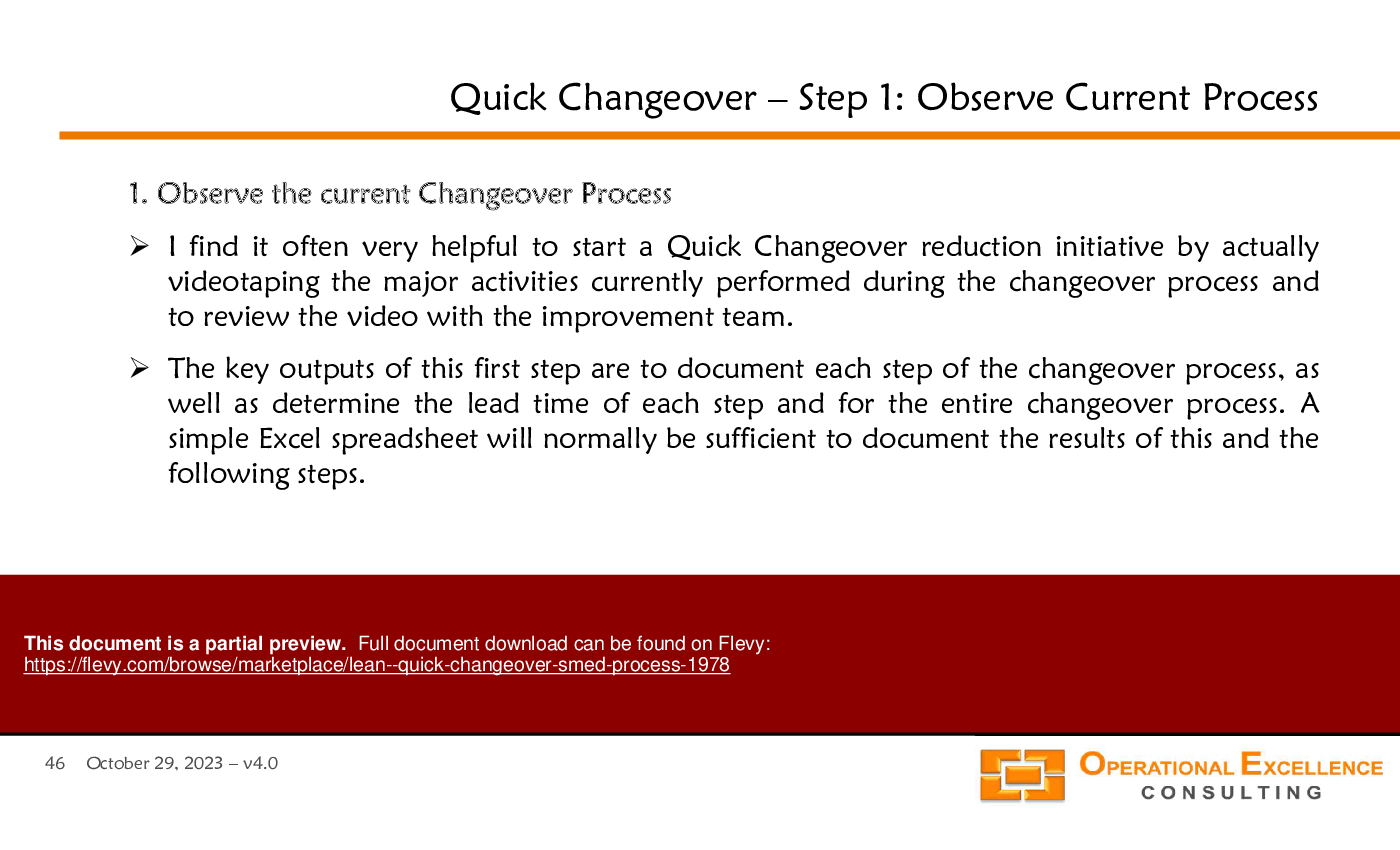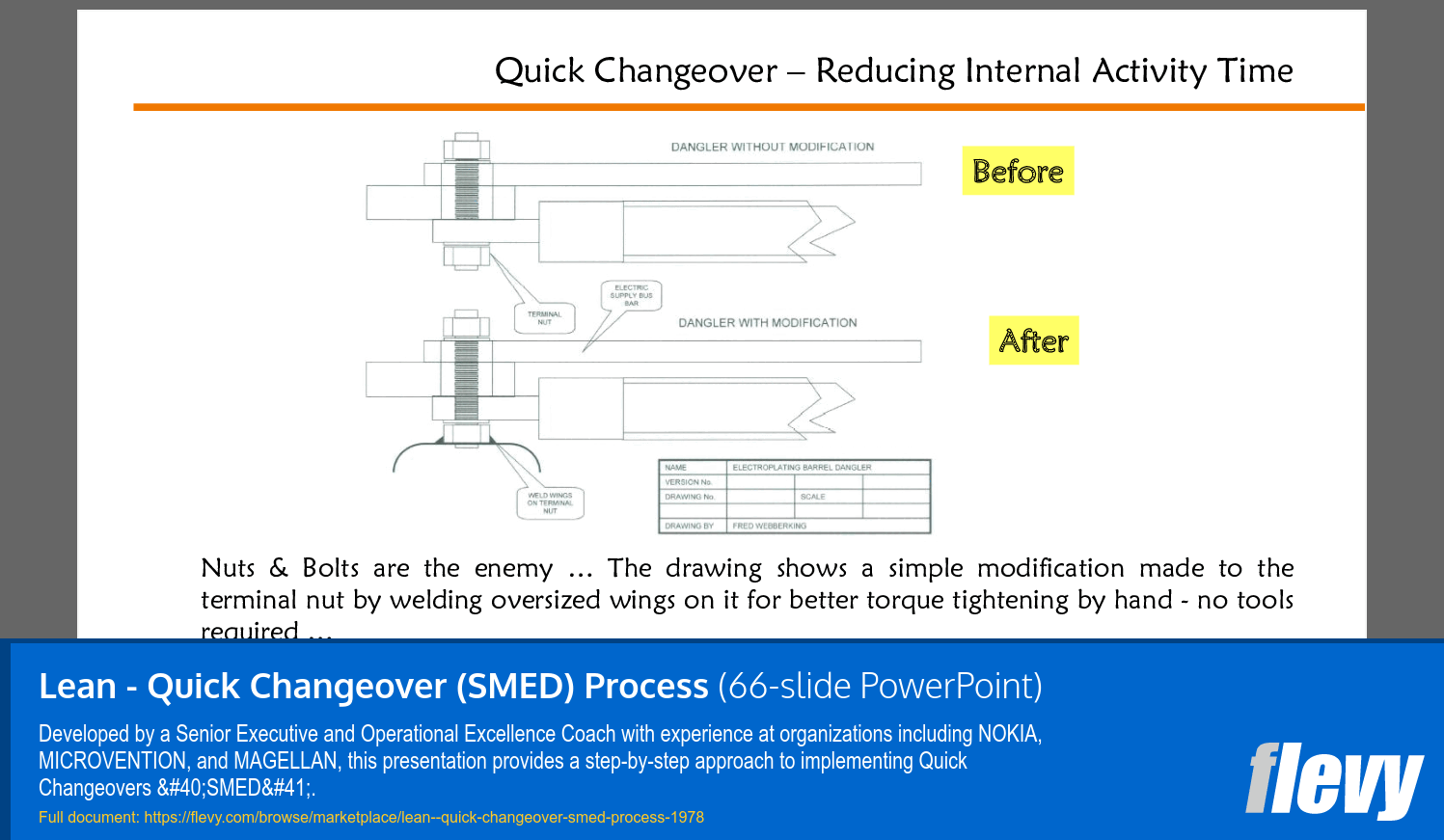Lean - Quick Changeover (SMED) Process (PowerPoint PPTX Slide Deck)
PowerPoint (PPTX) + Excel (XLSX) 66 Slides
SETUP REDUCTION PPT DESCRIPTION
The Quick Changeover or Single-Minute Exchange of Die (SMED) Process provides a rapid and efficient way of setting up or converting a process from running the current product or service to running the next product or service.
The Lean Quick Changeover (SMED) Process Training Module includes:
1. MS PowerPoint Presentation including 66 slides covering
• Introduction to Lean Management,
• The Five Lean Principles,
• The Seven Lean Wastes,
• Lean Kaizen Events, and
• A Step-by-Step Changeover Time Reduction (SMED) Process.
2. MS Excel Changeover Time Analysis Worksheet Template
"After you have downloaded the training material, you can change any part of the training material and remove all logos and references to Operational Excellence Consulting. You can share the material with your colleagues and clients, and re-use it as you need. The only restriction is that you cannot publicly re-distribute, sell, rent or license the material as though it is your own. Thank you."
Got a question about the product? Email us at support@flevy.com or ask the author directly by using the "Ask the Author a Question" form. If you cannot view the preview above this document description, go here to view the large preview instead.
Source: Best Practices in Setup Reduction PowerPoint Slides: Lean - Quick Changeover (SMED) Process PowerPoint (PPTX) Presentation Slide Deck, Operational Excellence Consulting LLC
SETUP REDUCTION PPT SLIDES













